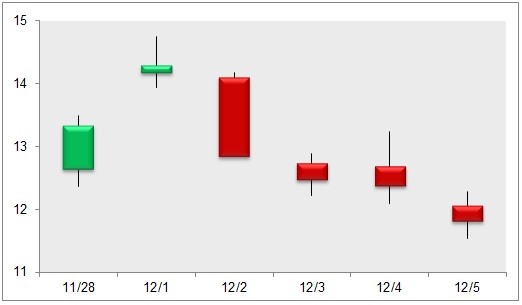Stock Trading 4 Ways To Trade The VIX
Post on: 25 Апрель, 2015 No Comment

4 Ways To Trade The VIX
The one constant on the stock markets is change. Said differently, volatility is a constant companion to investors. Ever since the VIX Index was introduced, with futures and options following later, investors have had the option to trade this measurement of investor sentiment regarding future volatility. At the same time, realizing the generally negative correlation between volatility and stock market performance, many investors have looked to use volatility instruments to hedge their portfolios. (For related reading, check out Getting A VIX on Market Direction .)
Unfortunately, it is not quite that simple and while investors have more alternatives than ever before, there are a lot of drawbacks to the entire class.
A Flawed Starting Point?
One significant factor in assessing exchange-traded funds (ETFs) and exchange-traded notes (ETNs) tied to VIX is VIX itself. VIX is the ticker symbol that refers to the Chicago Board Options Exchange Market Volatility Index. While often presented as an indicator of stock market volatility (and sometimes called the Fear Index) that is not entirely accurate.
VIX is a weighted mix of the prices for a blend of S&P 500 index options, from which implied volatility is derived. In plain(er) English, VIX really measures how much people are willing pay to buy or sell the S&P 500, with the more they are willing pay suggesting more uncertainty. This is not the Black Scholes model, in other words, and it really needs to be emphasized that the VIX is all about implied volatility.
What’s more, while VIX is most often talked about on a spot basis, none of the ETFs or ETNs out there represent spot VIX volatility. Instead, they are collections of futures on the VIX that only roughly approximate the performance of VIX.
A Host of Choices
The largest and most successful VIX product is the iPath S&P 500 VIX Short-Term Futures ETN (NYSE:VXX ). This ETN holds a long position in first and second month VIX futures contracts that roll daily. Because there is an insurance premium in longer-dated contracts, the VXX experiences a negative roll yield (basically, that means long-term holders will see a penalty to returns). What’s more, because volatility is a mean-reverting phenomenon, VXX often trades higher than it otherwise should during periods of low present volatility (pricing in an expectation of increased volatility) and lower during periods of high present volatility (pricing a return to lower volatility).

The iPath S&P 500 VIX Mid-Term Futures ETN (NYSE:VXZ ) is structurally similar to the VXX, but it holds positions in fourth, fifth, sixth and seventh month VIX futures. Accordingly, this is much more a measure of future volatility and it tends to be a much less volatile play on volatility. This ETN typically has an average duration of around five months and that same negative roll yield applies here — if the market is stable and volatility is low, the futures index will lose money. (For more, see Getting A VIX On Market Direction )
For investors looking for more risk, there are more highly leveraged alternatives. The VelocityShares Daily two-times VIX Short-Term ETN (Nasdaq:TVIX ) does offer more leverage than the VXX, and that means higher returns when VIX moves up. On the other hand, this ETN has the same negative roll yield problem plus a volatility lag issue — in other words, this is an expensive position to buy-and-hold and even Credit Suisse ‘s own product sheet on TVIX states if you hold your ETN as a long-term investment, it is likely that you will lose all or a substantial portion of your investment. (For more, see Dissecting Leveraged ETF Returns .)
Nevertheless, there are also ETFs and ETNs for investors looking to play the other side of the volatility coin. The iPath Inverse S&P 500 VIX Short-Term ETN (NYSE:XXV ) basically looks to replicate the performance of shorting the VXX, while the VelocityShares Daily Inverse VIX Short-Term ETN (NYSE:XIV ) likewise seeks to deliver the performance of going short a weighted average maturity of one month VIX futures.
Beware the Lag
Investors considering these ETFs and ETNs should realize that they are not great proxies for the performance of the spot VIX. In fact, studying recent periods of volatility in the S&P 500 SPDR (NYSE:SPY ) and the changes in the spot VIX, the one-month ETN proxies captured about one-quarter to one-half of the daily VIX moves, while the mid-term products did even worse. The TVIX, with its two-times leverage, did better (matching about half to three-quarters of the performance), but consistently provided less than fully two-times the performance of the regular one-month instrument. Moreover, because of the negative roll and volatility lag in that ETN, holding on too long after the periods of volatility started to significantly erode returns.














